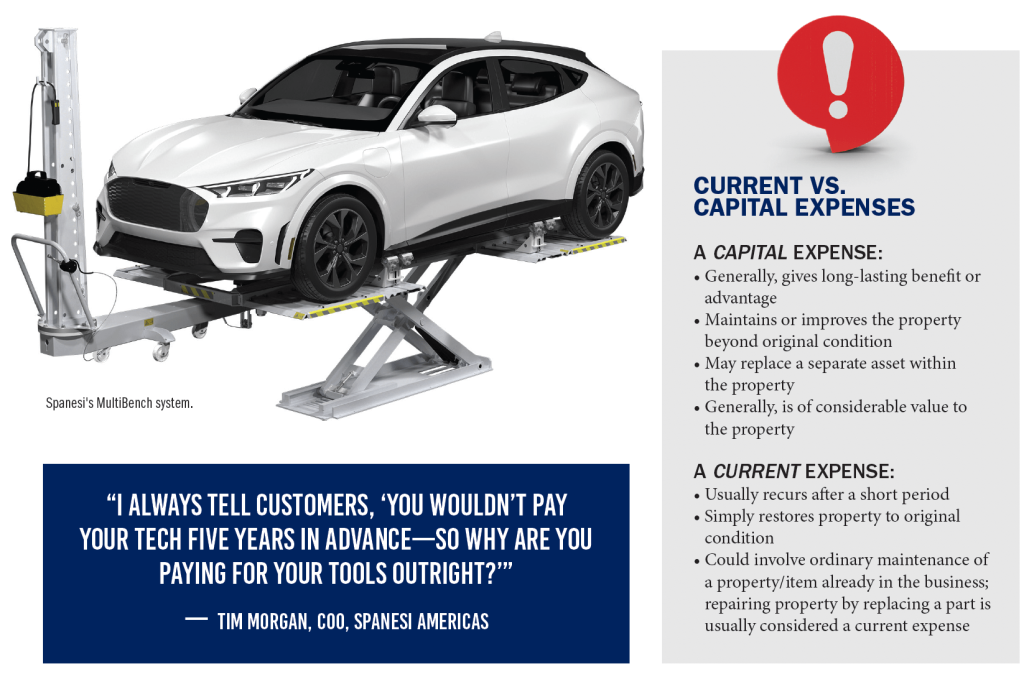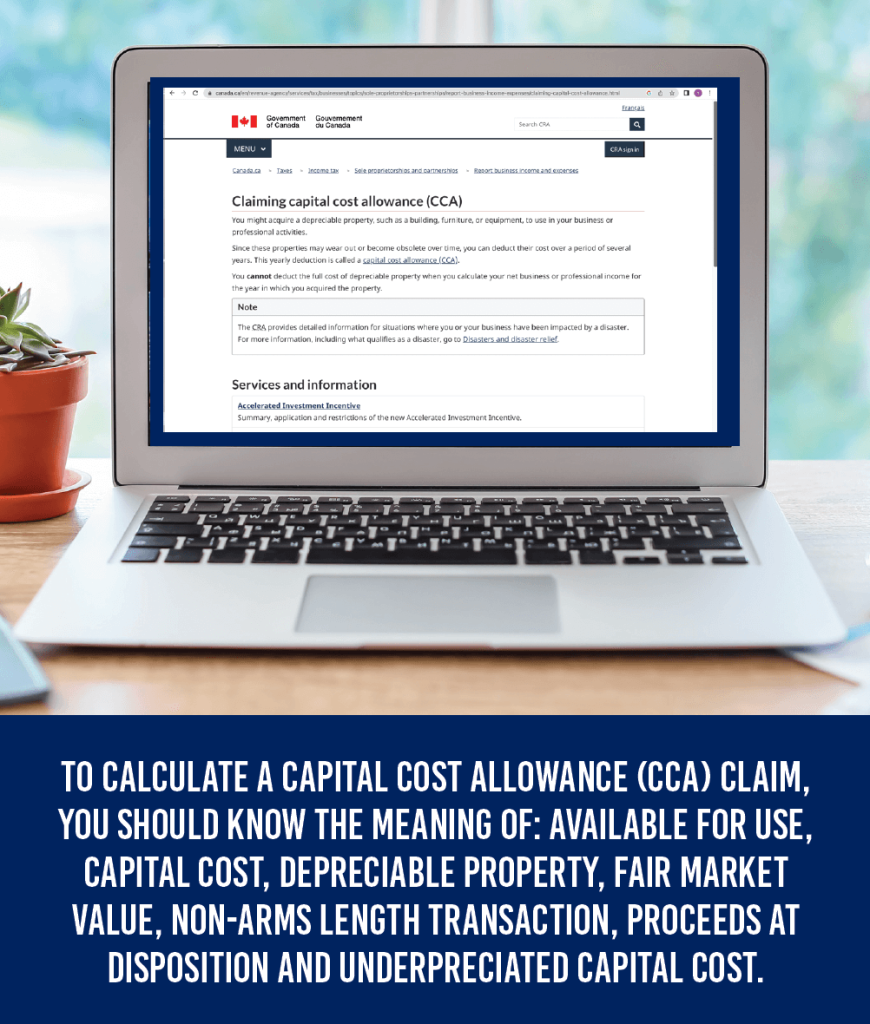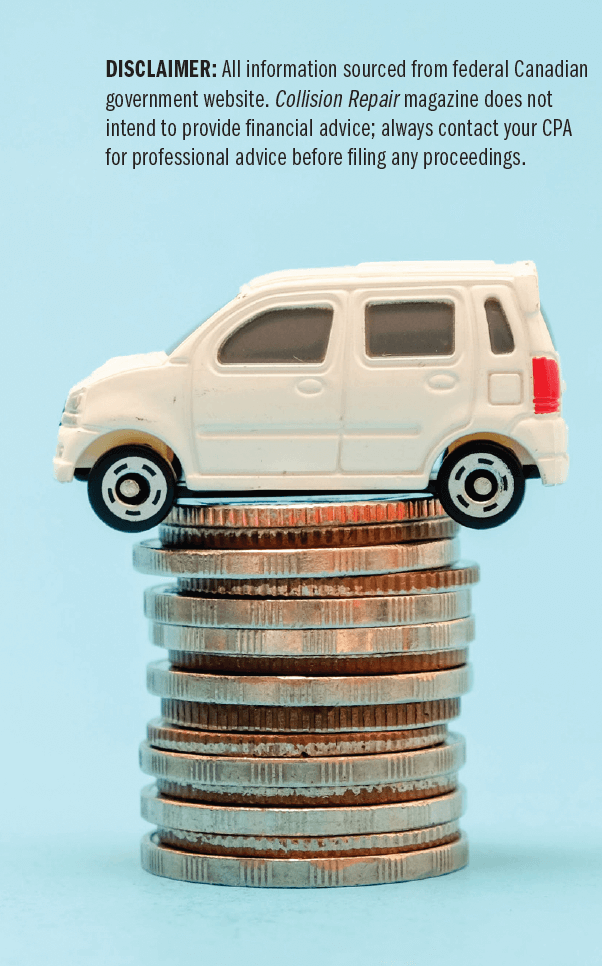Crash course on capital cost claims
Story by ALLISON ROGERS
We get it—equipping your collision centre with modern equipment is a daunting task. The often-enormous price tags, the training associated with a new tool, making space for a machine…it’s a whirlwind to even consider a new addition to your production floor.
New tools pop up on the market every day, and any walk across a trade show floor can send your mind spinning with purchasing considerations. But the tools, while impressive— who’s to say that shiny new tool won’t be obsolete in two years time, right? With the added consideration of frequent updates to OEM position statements, plenty of thought must go into any new tooling or training decisions. You must understand the benefits.
The costs don’t make the deal an entirely unfair trade-off, though—with proper equipment and training to match, your team can increase productivity and, in turn, generate more dollars. And, to make matters more palatable, not all equipment must be paid in full, upfront. As Tim Morgan, COO of Spanesi Americas puts it: “You wouldn’t pay your tech five years in advance—so why are you paying for your tools outright?”



CAPITAL COST ALLOWANCE
As of January 1, 2017, the eligible capital property (ECP) system was replaced with the new capital cost allowance (CCA) Class. Equipment could be quantified in the depreciable property category; since these properties may wear out or become obsolete over time, you can deduct their cost over a period of several years. This yearly deduction is called a capital cost allowance (CCA).
To calculate a capital cost allowance (CCA) claim, you should know the meaning of: available for use, capital cost, depreciable property, fair market value, non-arms length transaction, proceeds at disposition and underpreciated capital cost.
The amount you can deduct in a given year for any expense depends on if it is considered a current year expense or capital expense. You can usually claim CCA on property (other than a building) when it becomes available for use, whichever is earliest: the date you first use it to earn income; the second tax year after the year you acquire the property; the time just before you dispose of the property; the time the property is delivered or made available to you, and is capable of producing a saleable product or service. Other rules apply for buildings, parts of buildings or renovations/ alterations.
The capital cost is the amount on which you first claim CCA; it is usually a culmination of the purchase price; legal, accounting, engineering, installation or other fees related to buying or constructing the property and the costs of any additions or improvements (if not already claimed as current expenses). Depreciable property is any purchase that wears out as it is used over the years, like cars, equipment or other machines. You can claim capital cost allowance on depreciable property.




Fair market value refers to the highest price a business, property or other asset would sell for in an open and competitive market where buyer and seller are dealing at arm’s length with each other. An arm’s length transaction is generally a transaction that reflects ordinary commercial dealings between parties acting in their separate interests. A non-arms length transaction is one that may occur between individuals connected by family or otherwise, though such a transaction can exist between individuals and partnerships, depending on the circumstances.
The proceeds of disposition are usually the amount you receive, or that the CRA considers you to have received for your property. It could include compensation received for damage, expropriated, destroyed or stolen properties.
Underpreciated capital cost, or UCC, is equal to the total capital cost of all the depreciable property in a class, minus the CCA claimed in previous years; meaning the CCA claimed each year reduced the UCC of the property.
The CRA advises to use the declining balance method to calculate your CCA, wherein you apply the CCA rate to the capital cost. Over the life of the property, the rate is applied against the remaining balance. The remaining balance declines each year that you claim CCA, says the CRA. It also stresses that you do not have to pay the maximum amount of CCA in any given year; any amount can be claimed, from zero to the maximum.
More information on CCA and filing claims can be found at www.canada.ca/en/ revenue-agency.












































































